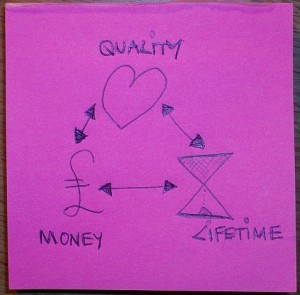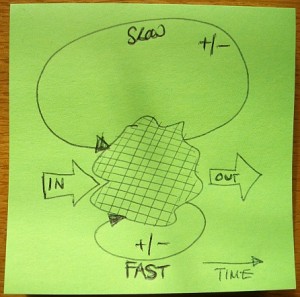A few weeks ago we were asked to look after the class fish during the half-term school holiday. Easy enough, just feed it daily and change the water when it gets murky was our handed-down knowledge of fish-management. So when we observed the fish swimming at the surface apparently gulping air, even our limited grasp of fish-biology suggested that something was not quite right. After a short web-surf our anxiety was confirmed: our fish was exhibiting high stress behaviour – it was being poisoned by toxic waste – the waste it makes itself. We learned that a fish-tank is a delicate and complex eco-system. Too big a fish in too small a tank, over-feeding, stagnation and infrequent complete water changes with toxic (chlorinated) tap-water are the commonest ways we upset this delicate balance. We were unintentionally killing the fish! The remedy was obvious: we had to learn about fish and learn how to maintain the fish-tank-eco-system. And fast! The fish was delivered back to school in a much bigger tank, complete with light, filter, pump, and the output of our learning – written instructions. The reaction was: “Wow! We can’t believe this is the same fish. It looks and behaves completely differently. It looks happy”.
This life-lesson reminded me of a book that I read some years ago called “Fish!” which involves the Pike Place Fish Market in Seattle and a story of how the fish-mongers inspired others to dramatically improve their own toxic work places. The message in the story is that we all swim in the emotional toxic waste that we ourselves create; each of us has the choice to commit to reducing our toxic emotional waste emissions; we can contract to hold each other to account on this commitment; and collectively we have the power to drain our own toxic emotional waste swamps. This led to an “eureka” moment: Improvement can not happen in a toxic emotional environment. So how do we know we have one? What are the symptoms and signs? With this insight I believe we can answer that question by just looking and listening.
And if you fancy a diet of near-pure toxic emotional waste all you have to do is read a daily newspaper. Yeuk!


